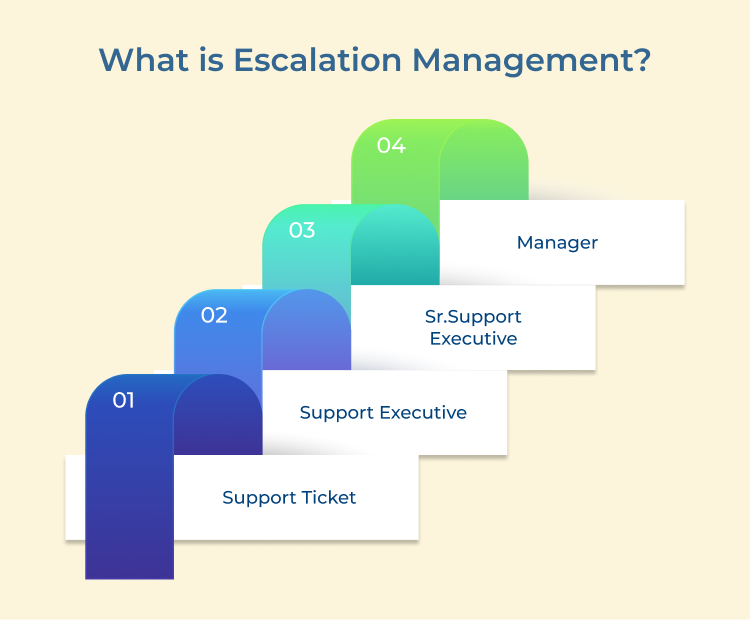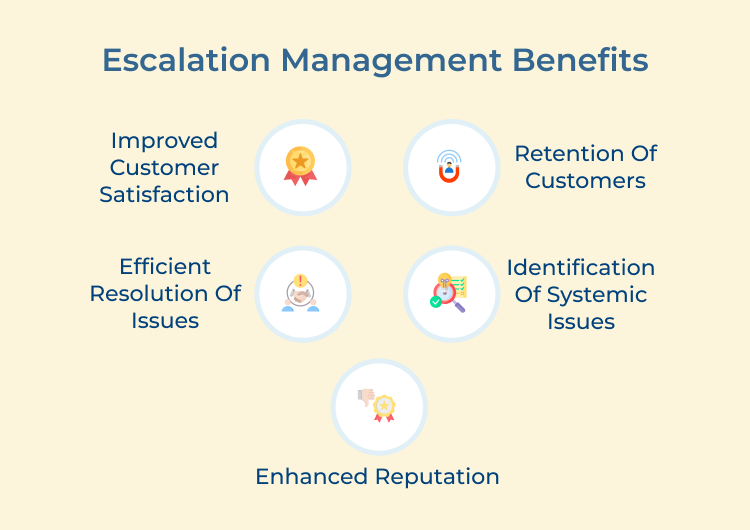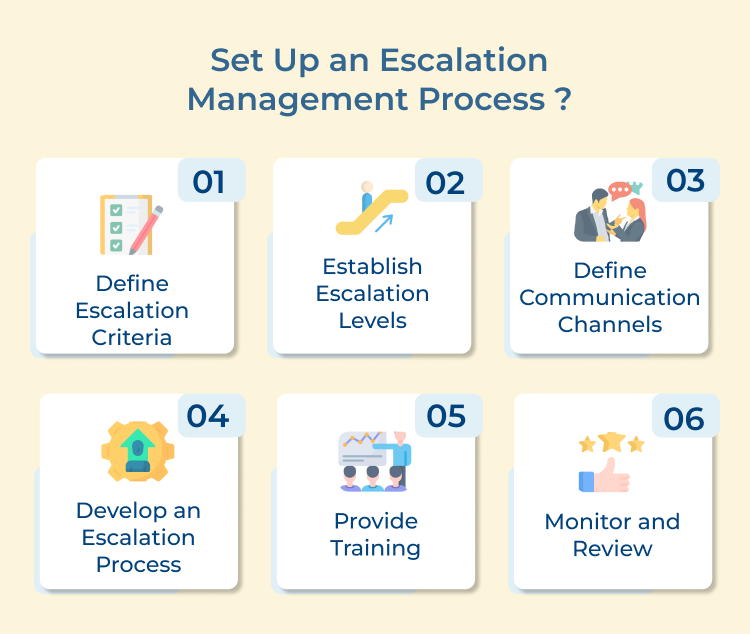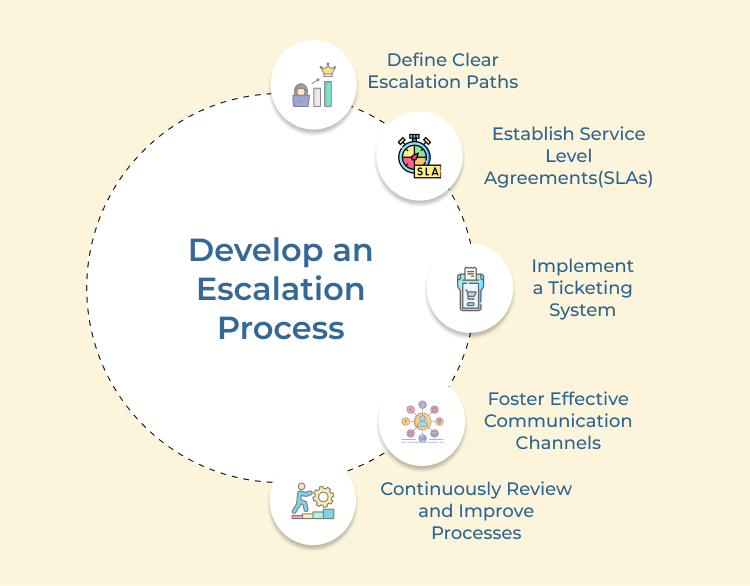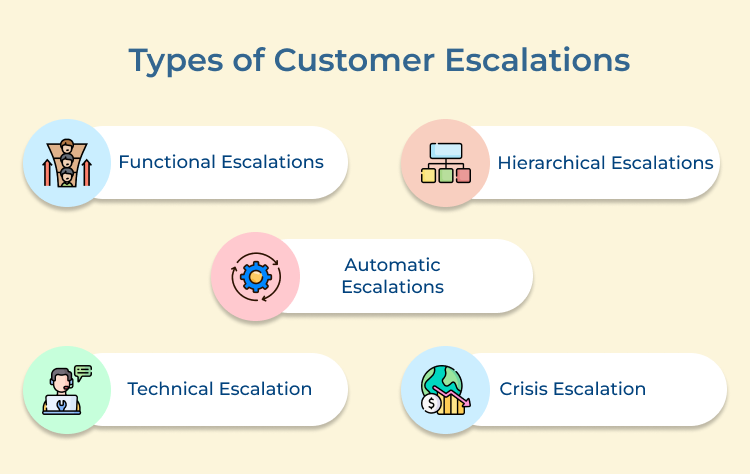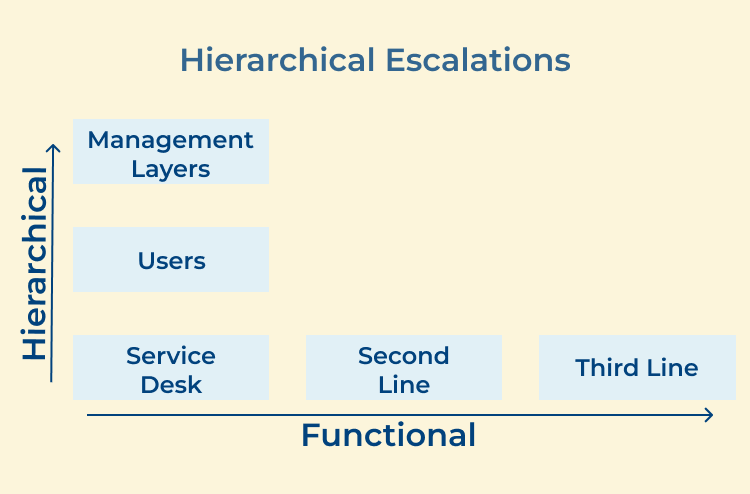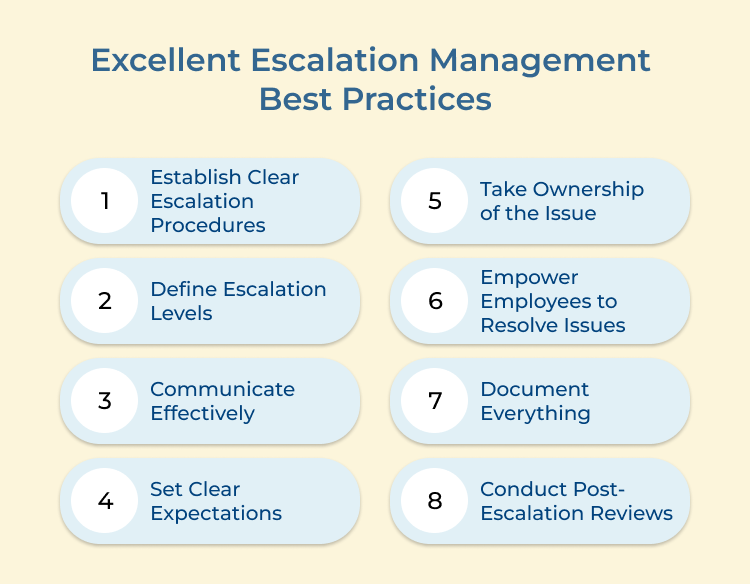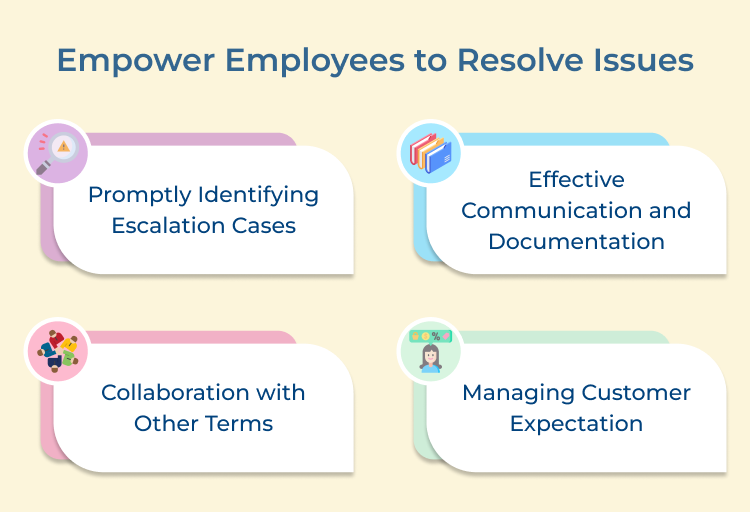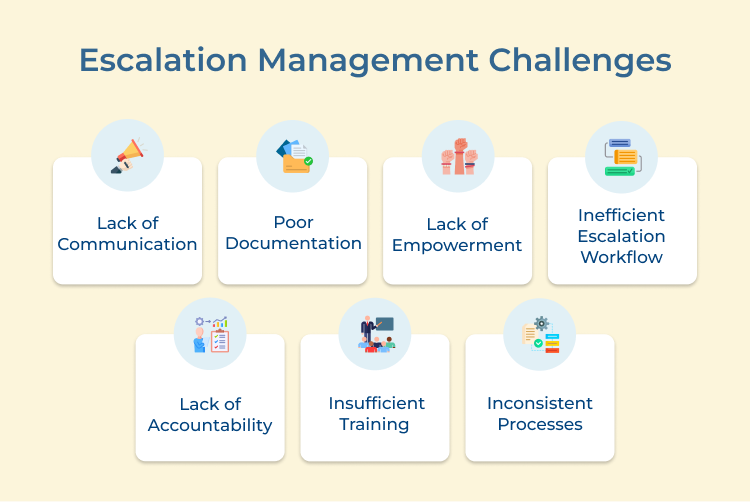1. Establish Clear Escalation Procedures
Document clear escalation procedures that outline how issues should be escalated, who should be involved at each level and how communication should flow. Make sure that all employees are aware of these procedures and know when & how to escalate issues.
Follow the below tips:
- Clearly outline the steps that need to be taken when an issue arises, including who to contact, how to escalate the issue and what information needs to be provided.
- Ensure that all employees are trained on the escalation procedures and are aware of their responsibilities in the process.
- Regularly review the escalation procedures to address any gaps or inefficiencies in the current process.
2. Define Escalation Levels
Clearly define different levels of escalation based on the severity of the issue. It could include levels such as frontline support, team lead, manager and executive. Each level should have specific criteria for when an escalation should occur.
Consider few tips:
- Establish different levels of escalation based on the severity and complexity of the issue, ensuring that higher-level management is involved when necessary.
- Clearly define the escalation criteria to the next level, such as unresolved customer dissatisfaction or a high impact on business operations.
- Communicate the escalation levels to all employees so they know when and how to escalate an issue appropriately.
3. Communicate Effectively
Effective communication is key during an escalation. Ensure that everyone involved is kept informed of the status of the issue, any updates and the expected resolution time. Use multiple channels such as email, phone calls and meetings to ensure that communication is clear.
Here are the tips to follow:
- Provide regular updates to all parties involved in the escalation process, including the customer, employees and management, to keep everyone informed of the status of the issue.
- Use clear and concise language when communicating about the issue, avoiding technical jargons that may confuse or mislead stakeholders.
- Encourage open and honest communication between all parties, encouraging a collaborative approach to resolving issues.
4. Set Clear Expectations
Set clear expectations with the customer or stakeholder regarding the escalation process. Let them know what they can expect in terms of communication, resolution time and potential outcomes. Managing expectations can help prevent misunderstandings and improve customer satisfaction.
Here are some tips to consider:
- Clearly define the expected resolution time for each escalation level, providing realistic timelines for resolving the issue based on its severity.
- Communicate the expected outcomes of the escalation process to all parties involved, ensuring that everyone is on the same page regarding the desired end result.
- Manage expectations by communicating any potential delays or roadblocks in the resolution process, setting realistic expectations for all stakeholders.
5. Take Ownership of the Issue
When an issue is escalated, the person or team responsible for resolving it should take ownership of the problem. It means actively working towards a solution, keeping stakeholders informed and ensuring that the issue is resolved in an estimated time.
Few tips to follow:
- Encourage employees to take ownership of the issues they are handling, ensuring that they are proactive in seeking solutions and taking responsibility for resolving the problem.
- Empower employees to make decisions to address the issue, giving them the autonomy and authority to resolve the problem effectively.
- Follow a culture of accountability within the business, where employees are held responsible for their actions and are committed to finding solutions to issues that arise.
6. Empower Employees to Resolve Issues
Empower frontline employees to resolve issues whenever possible. Provide them with the training, resources and authority to address customer concerns without having to escalate them to higher levels. It can help speed up the resolution process and improve customer satisfaction.

